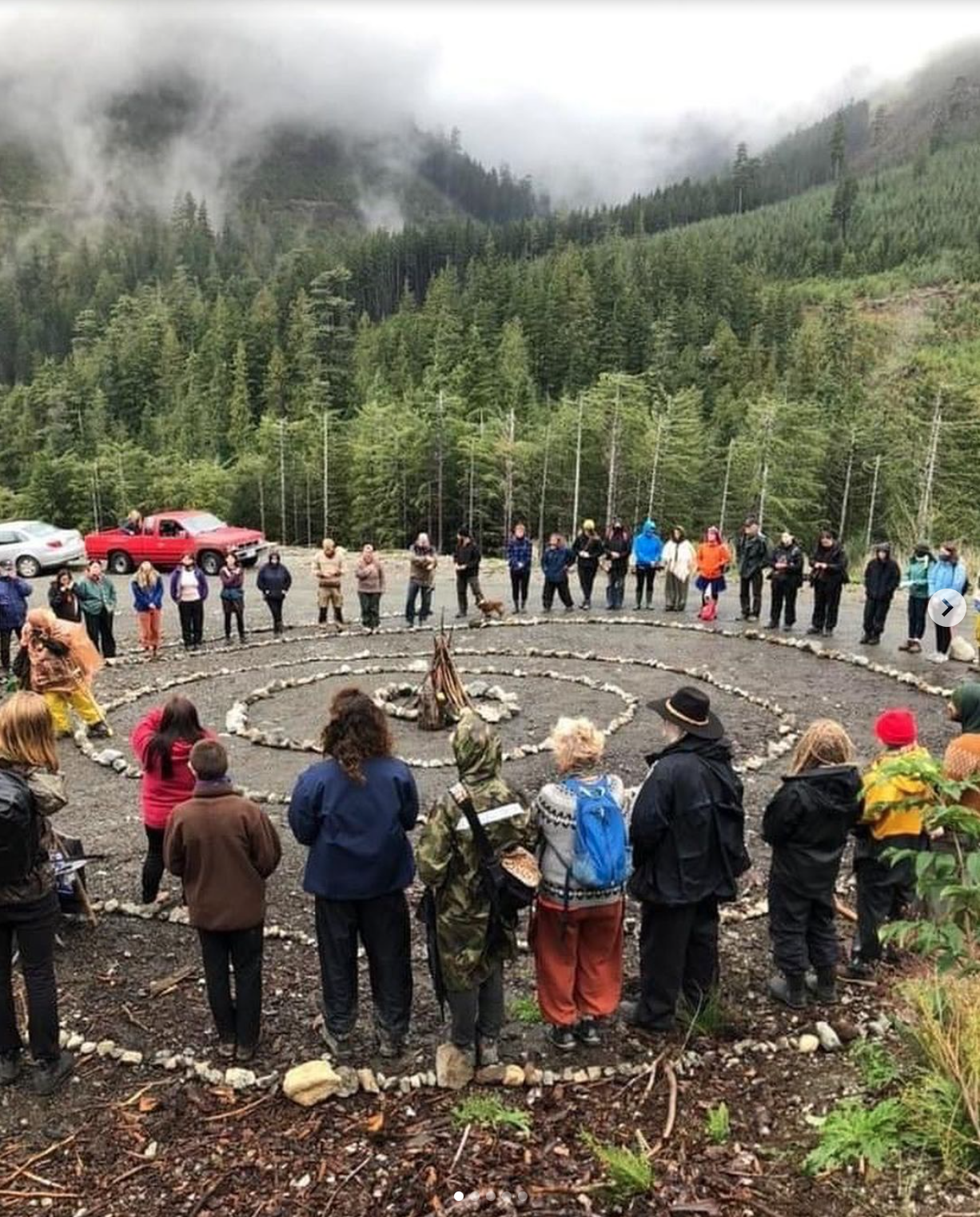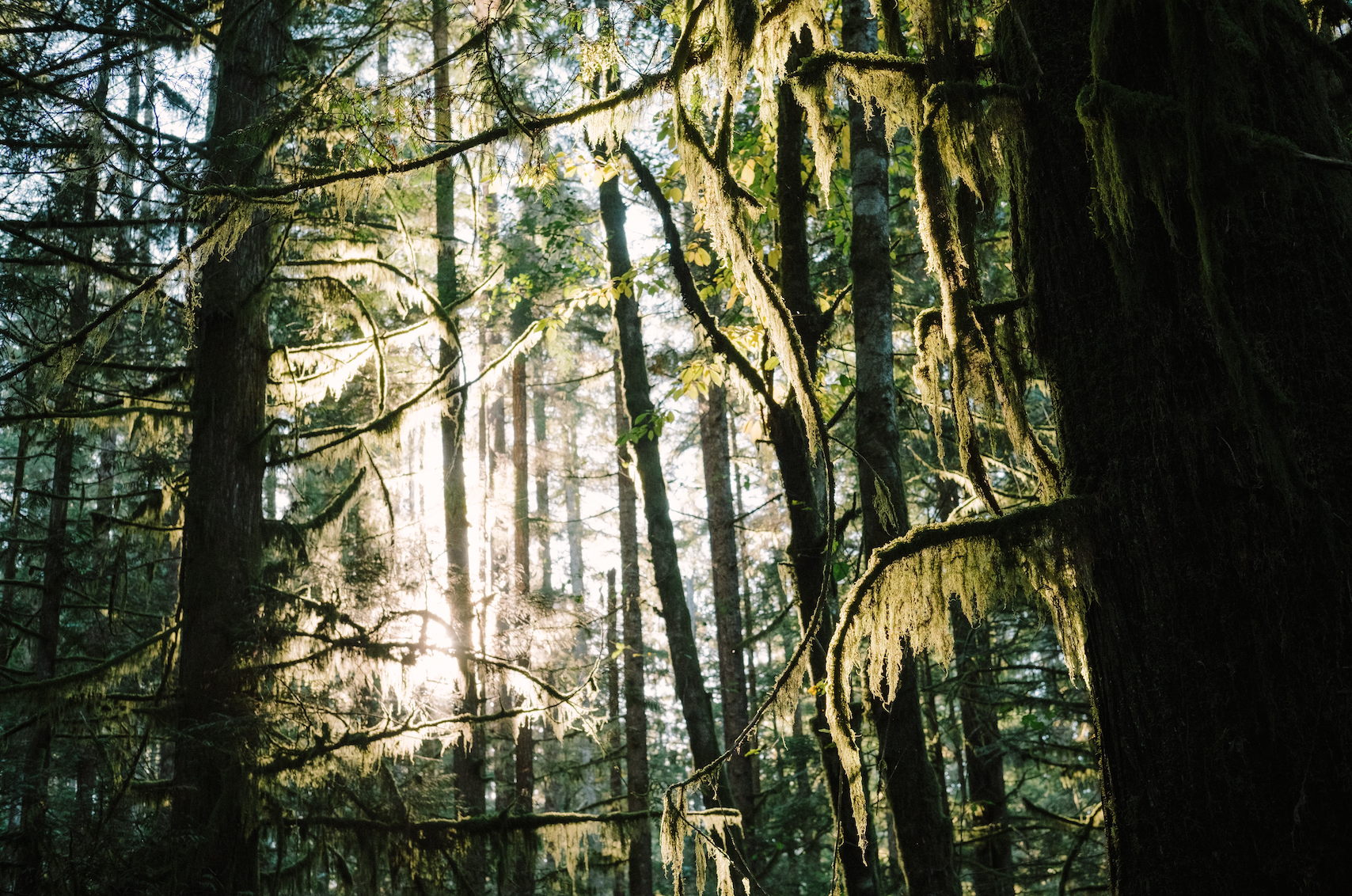Feeding Fairy Creek
Since the summer of 2020, thousands of people have camped out in the forests of Vancouver Island, trying to stop old-growth logging in the region known as Fairy Creek. Located northeast of Port Renfrew on the traditional territory of the Pacheedaht First Nation, Fairy Creek, or Ada’itsx, has become the site of the largest act of civil disobedience in Canadian history. RCMP officers have arrested more than 1,100 protesters.
For several months earlier this year, a young, Two-Spirit Indigenous person, who goes by the camp name “Naas,” was making sure that many of those protesters had fresh, nourishing food to eat. Naas' story is a snapshot into of a few months cooking in the forest, and they say that despite the challenges of working in the bush and planning meals with donated ingredients and limited resources, the work that they were doing was not just about the food or even solely about protecting the trees: it was about building community and standing together to support their beliefs.
Here’s their story.
Finding Community
A member of the Hesquiaht First Nation who has been studying art at Emily Carr University, Naas first went to Fairy Creek in May of 2021. Activists had set up different camps throughout the woods, and Naas initially headed for the camp called Sassin, which means “hummingbird” in the Nuu-chah-nulth language, where a small group of other Indigenous people were based.
 At Sassin camp, Naas began waking up at dawn to make coffee for the elders. That led to preparing French toast or pancakes for breakfast and then to making dinner, often barbecuing over the fire pit, to feed between ten and 20 people each day.
At Sassin camp, Naas began waking up at dawn to make coffee for the elders. That led to preparing French toast or pancakes for breakfast and then to making dinner, often barbecuing over the fire pit, to feed between ten and 20 people each day.
“People don't eat properly out there unless someone's feeding them,” said Naas, who drew on previous experience working at Nikkei Ramen-Ya in Courtenay and at restaurants in Australia.
Like most Fairy Creek volunteers, Naas adopted a camp name, an alias to provide safety from the authorities. “Naas” means “creator” in the Hesquiaht language, a name they took on while being a “creator in the kitchen.”
“At Sassin camp, I had this intense sense of finding my people, and this sense of community that I had been looking for, as a queer Indigenous person surrounded by other Indigenous people, other queer people, other people who are sick and tired of the status quo. We were on the land standing for something that we believed in.”
“They were like my family, all these people that I had just met. You form bonds really quickly.”
Cooking on the Front Lines
While cooking for volunteers at Sassin, Naas realized that they were still too sheltered and distant from the front lines. So Naas went to the Fairy Creek headquarters camp, the hub of the protest operations. “I signed up for a shift in the kitchen. There were three volunteers there already, and they had no idea what was going on. It was chaos.”
Naas quickly realized that at headquarters, as at Sassin, the kitchen was where they could make a difference. Together with another volunteer cook, who goes by the camp name “Gingko,” they began trying to bring order to the process of feeding 60 to 100 people every day.
“We made a lot of chili and spaghetti. Big pot meals,” but they were also able to get more creative. “We made huevos rancheros one day – tortillas, beans, eggs, salsa, the whole thing. We had a full bar of toppings.” As a result, “People were better prepared to work through the day. They weren't just surviving on granola bars and beans and whatever else.”
The kitchen that Naas and Gingko created became known as Naas’ Bush Café. The team worked 16-hour days, waking up before six in the morning to have breakfast ready by eight. They’d make lunch and dinner, squeeze in meal planning and prep throughout the day and into the evening, “checking donations, because you don't do grocery runs. What you have is what you work with.”
The camp cooks relied largely on donated ingredients. Often, new volunteers coming to Fairy Creek would contact Naas or Gingko through their social media accounts, asking what supplies they could bring. Vancouver Island businesses and farms donated fresh produce and other ingredients as well. During zucchini season, the kitchen team received so many boxes of the vegetable that they began asking other volunteers, “Would you like zucchini chili or zucchini noodles or zucchini everything?”

Photo of community above by @ruz.rose on Instagram; Photo of trees by @focus.wandering on Instagram.
The Heart of the Camp
At headquarters camp, Naas said, “That's when I felt like I was fully submerged in the movement, up to my neck in action and drama, and the political nature of having so many different people trying to co-exist in one space together. Right in the heart of it, because the kitchen was the very heart of headquarters camp.”
Naas saw their role not only as a cook, but also as a mediator, helping resolve conflicts that arose among the volunteers. “There was a lot of miscommunication. I think it comes from cultural differences, but also colonial upbringings, different levels of privilege, and different levels of education and self-awareness.”
They also tried to create an environment in the kitchen where other volunteers wanted to help. “We brought that sense of community that we had out at Sassin in a smaller camp to a much larger camp.”
“Once we got to a point where people wanted to work with us, we had enough helping hands that we could prep for breakfast and then have the helpers prep sandwiches, salads, snack bags, or food tubs to go to the other camps up the mountain, because not all the camps had kitchens.”
One day, Naas said, they made salad in a huge tote box. “We had one of those metal frame backpacks, and we tied the salad tote to the backpack. Someone hiked it from headquarters up to Waterfall camp, which is the top camp of the mountain. Those people don't see fruit and vegetables very much. And they were like ‘SALAD!’”

The Next Chapter
Naas, Gingko, and other volunteers designed a new kitchen facility for the headquarters camp, and Naas’ dad came to help with the construction. But in August, just as they completed their kitchen space, RCMP officers raided headquarters camp. Naas, Gingko, and numerous other volunteers were arrested. “We never got to use the new kitchen before they crushed it. It was tragic.”
“We wanted to create a sense of community. We wanted to feed our people. And we wanted to solidify some sense of order in that space. And it was so difficult to see all of that be destroyed.”
After their arrest, Naas returned to Victoria. They’re back at school but still looking for ways to support the movement, like working with other volunteers at Victoria’s Red Cedar Café to make food to bring to the forest defenders. “We made over 300 vegan power balls, protein balls for people to eat on the go. And we made almost 200 scones.”
“We can still be a part of this. Things change every day, every week. But no matter what we're doing, we're still a part of it.”




